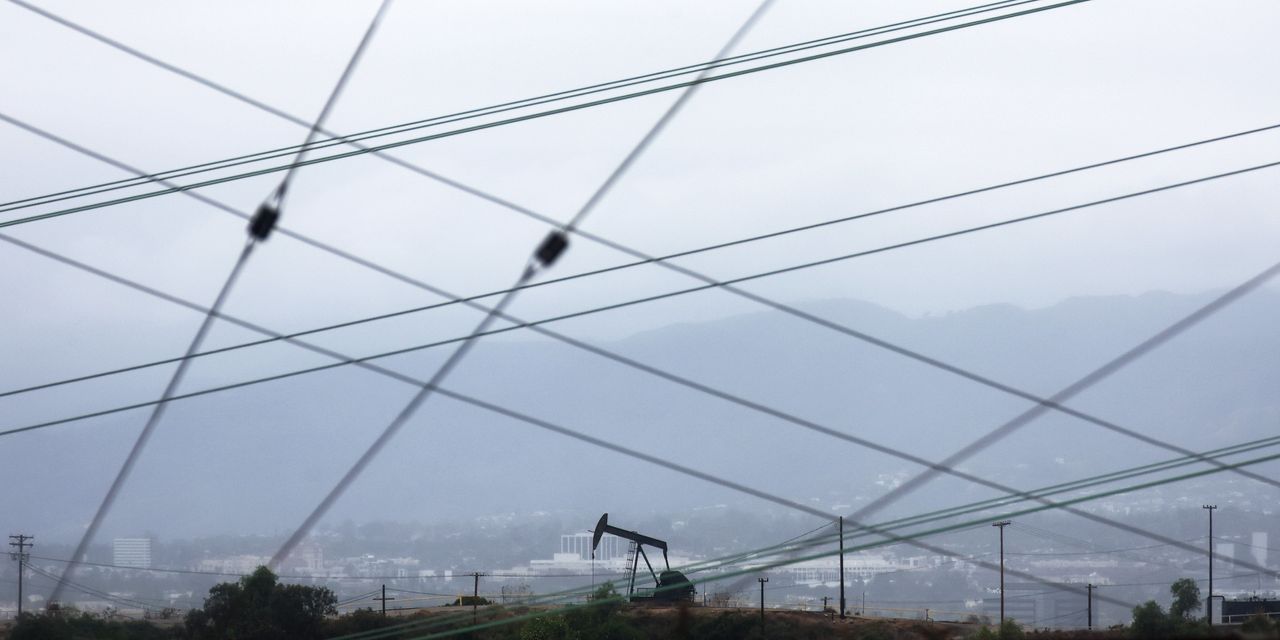Oil futures bounced Thursday, ending higher after Saudi Arabia extended a production cut for another month.
Crude prices reclaimed the ground lost in the previous session after a downgrade of the U.S. credit rating dented sentiment across markets, offsetting a record drop in U.S. crude inventories.
Price action
-
West Texas Intermediate crude for September delivery
CL00,
+2.81% CL.1,
+2.81% CLU23,
+2.81%
gained $2.05, or 2.6%, to close at $81.55 a barrel on the New York Mercantile Exchange. -
October Brent crude
BRN00,
+0.07% BRNV23,
+0.07% ,
the global benchmark, rose $1.94, or 2.3%, to settle at $85.14 a barrel on ICE Futures Europe. -
Back on Nymex, September gasoline
RBU23,
+0.21%
fell 0.4% to close at $2.765 a gallon, while September heating oil
HOU23,
+2.79%
advanced 2.4% to end at $3.075 a gallon. -
September natural gas
NGU23,
+3.15%
rose 3.6%, ending at $2.565 per British thermal units.
Market drivers
Saudi Arabia’s state news agency said a voluntary production cut of 1 million barrels a day, which was implemented in July and set to run through the end of this month, would be extended to include September. The cut “can be extended, or extended and deepened,” according to the report.
Shortly later, Russian Deputy Prime Minister Alexander Novak said the country would cut exports by 300,000 barrels a day in September, news reports said. Russia had previously pledged to cut production by 500,000 barrels a day from March through year-end.
Brent and WTI slumped more than 2% Wednesday, logging their biggest one-day percentage drops since June 27 despite data that showed a record 17 million barrel decline in U.S. crude inventories last week.
Analysts blamed soft sentiment about economic prospects in the wake of Fitch’s late Tuesday downgrade of the U.S. credit rating and a bounce in the U.S. dollar
DXY
with sparking a selloff after crude had previously rallied to three-month highs on signs of tightening global supplies and rising expectations over the demand outlook.
“The timing for the downgrade was poor, if not unfortunate, with traders on vacation and away from their desks as markets are thin and remain susceptible to knee-jerk reactions to the news,” said Stephen Innes, managing partner at SPI Asset Management, in a note.
A Friday meeting of an OPEC+ panel isn’t expected to recommend any changes to the output policies of the group, made up of the Organization of the Petroleum Exporting Countries and its allies, including Russia.
Natural-gas futures rose after the Energy Information Administration reported an injection of 14 billion cubic feet (Bcf) of gas into storage for the week ended July 28. Analysts surveyed by S&P Global Commodity Insights, on average, had forecast an injection of 18 Bcf.
The reading was 23 Bcf smaller than the five-year average for the week, noted Victoria Dircksen, commodity analyst at Schneider Electric. As a result, the storage surplus relative to the five-year average fell from 13.8% to 12%, she wrote.
Read the full article here



